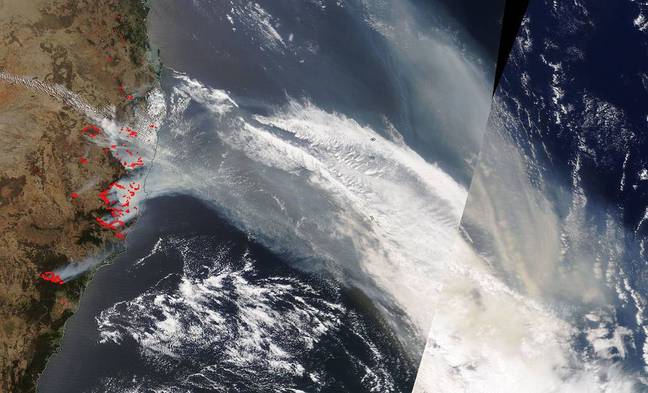A wildlife expert states that koalas are now ‘functionally extinct’ as a result of devastating bushfires in Australia, which have killed thousands of koalas and destroyed 80 percent of their natural habitat.
Deborah Tabart OAM, chairman of the Australian Koala Foundation, estimates that more than 1,000 koalas could have been killed in the last two months, which has left them ‘functionally extinct’.
The BBC states that this term is used to describe an animal population with so few ‘breeding adults’ that they’re unlikely to produce a new generation.

This drastic decline in the population is the result of deforestation and severe bushfires, which have been continuing to wreak havoc in New South Wales and Queensland.
Speaking to Daily Mail Australia, Tabart said:
“If we combine all of the estimated deaths of koalas in the bushfires, there could be 1,000 koalas that have been killed in the last two months.
We know there are 31 koalas that have been killed in Port Macquarie, but I think that is not a high enough number.”
Tabart went on to explain that even the koalas that have managed to survive the bushfires are still at risk, as they have been left with little habitat – eucalyptus trees take ‘months to grow back’.
She now urges the Australian government to step in and take action, calling on the prime minister to enact the Koala Protection act, which was written back in 2016.
She continued:
“They are equivalent to the Great Barrier Reef. Everyone wants to touch a koala, so you would think the government would want to do something to save them.
The plight of the Koala now falls on the Prime Minister’s shoulders.”

In an interview with news.com.au earlier this month, Tabart explained just what it meant for a species to be functionally extinct.
She said:
“Functionally extinct means that a koala living today might have one joey and that joey may or may not have a joey, if they don’t, that’s functionally extinct.
We think there’s no more than 16-18,000 koalas in the whole of NSW… So to lose a population of that size in a stronghold is disastrous.”
The bushfires stem from long-term drought, coupled with strong winds on the east coast of Australia.
NASA satellite images show just how extensive the damage has been recently, with a post on the agency’s website last week saying: “The state of New South Wales (NSW) in south eastern Australia is continuing to experience devastating bushfires due to the dry tinder-like atmosphere in the territory: high winds, dry lightning and continuing heat.

“Approximately 69 fires are still raging in NSW” according to its Facebook page and more than 70 are burning to the south in Queensland.
“And the summer has just begun in the region. NASA’s Terra satellite captured this image of the fires and the smoke pouring off the edge of Australia and into the southern Pacific Ocean on Nov 13, 2019.
“Close to 1.1 million hectares (2.7 million acres) have burned since September.”
